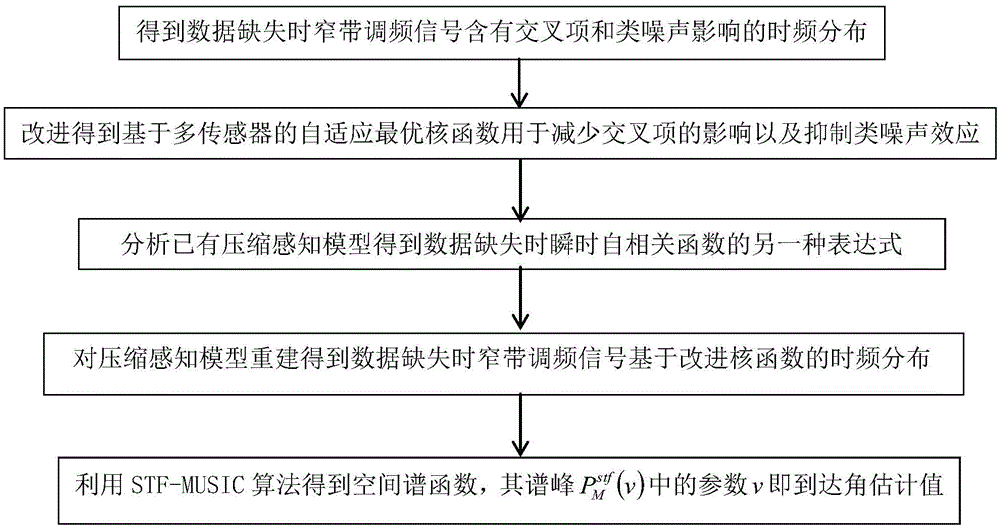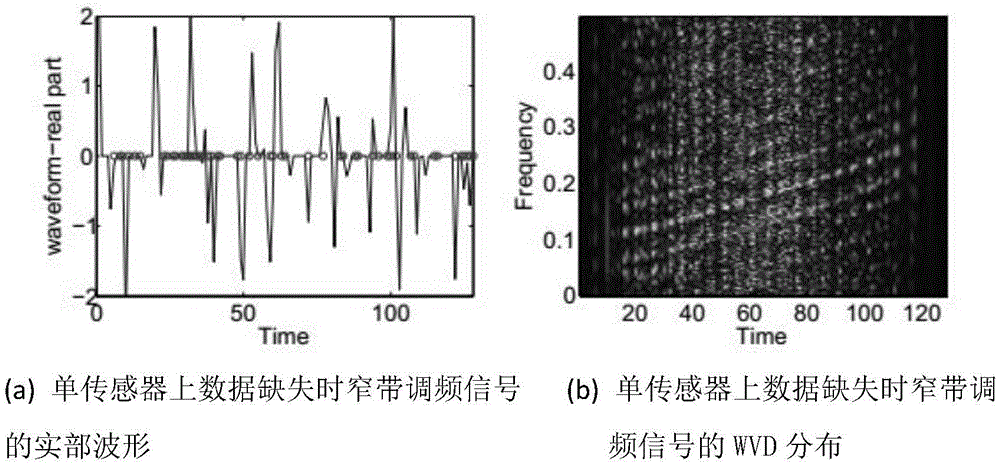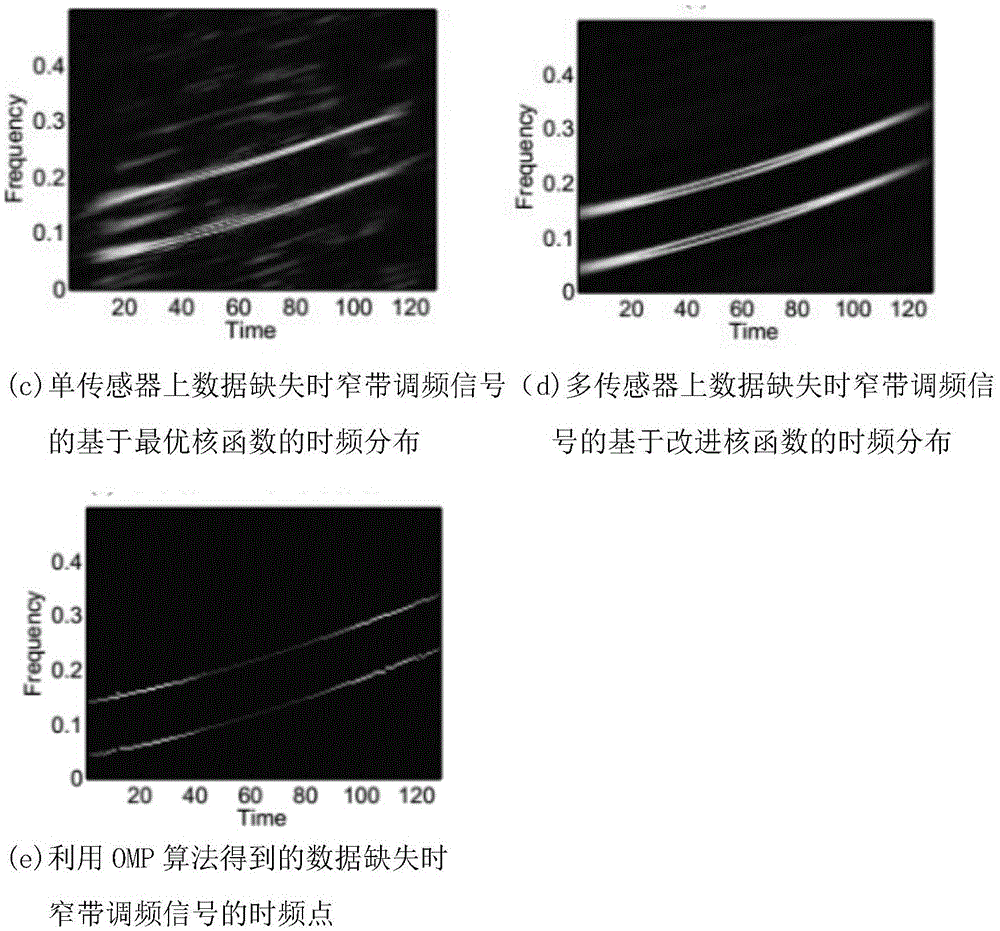Estimation of arrival angle of narrowband frequency modulation signal based on time frequency analysis during data loss
A technology of data loss and narrow-band frequency modulation, which is applied in spectrum analysis/Fourier analysis, direction finder using radio waves, etc., to suppress noise-like effects and reduce the effect of cross-terms
- Summary
- Abstract
- Description
- Claims
- Application Information
AI Technical Summary
Problems solved by technology
Method used
Image
Examples
Embodiment 1
[0038] The present invention is a method for estimating the angle of arrival based on time-frequency analysis of narrowband FM signals when data is missing. Referring to Fig. 1, the angle of arrival estimation process includes the following steps:
[0039] (1) Obtain the time-frequency distribution of the narrowband FM signal when the data is missing: When estimating the data missing and analyzing the angle of arrival of the narrowband FM signal based on time-frequency analysis, noise, attenuation and various obstacles will cause data loss, see Figure 2, Figure 2 It is the distribution map of different stages in the process of improving the time-frequency distribution of the narrow-band FM signal based on the time-frequency distribution of the improved kernel function when the data is obtained by using the present invention. The input signal-to-noise ratio is 10dB, and 60% of the data samples are randomly missing. In Fig. 2, the noise-like is gradually obtained suppressed. Fig...
Embodiment 2
[0048] When the data is missing, the method for estimating the angle of arrival of the narrowband FM signal based on time-frequency analysis is the same as that in Embodiment 1.
[0049] In step (2), reduce the cross term and suppress the noise-like effect, improve the adaptive optimal kernel function, obtain an adaptive optimal kernel function based on multiple sensors, and obtain clearer time-frequency distribution information, including Follow the steps below:
[0050] (2.1) Optimize the adaptive kernel function of the existing single sensor to obtain the adaptive optimal kernel function of the single sensor
[0051]
[0052] in
[0053]
[0054] Where α is a fixed parameter, α>=0, γ and ψ are the radius and included angle of the fuzzy function and kernel function in polar coordinates respectively, A(r,ψ) is the fuzzy function on a single sensor, and the fuzzy function in polar coordinates The function is obtained by direct calculation of the polar sample or by in...
Embodiment 3
[0063] The method for estimating the angle of arrival based on time-frequency analysis narrow-band FM signal during data absence is the same as embodiment 1-2, and the process of obtaining narrow-band FM signal based on the time-frequency distribution of improved kernel function when data is missing described in step (4) comprises:
[0064] (4.1) Calculate the average value of each item of the instantaneous autocorrelation function vector expression when the data is missing: and C respectively [t] , W [t] and ∈ [t] , where t∈[1,...,T], where Φ is a one-dimensional Fourier transform matrix with respect to frequency f, C [t]is the instantaneous autocorrelation function, specifically, it is a vector composed of all instantaneous autocorrelation functions whose time is t and the time interval is τ, W [t] is a vector composed of all time-frequency discrete distributions of frequency items at the same time t, ∈ [t] is the added noise vector;
[0065] (4.2) From the Fourier...
PUM
 Login to View More
Login to View More Abstract
Description
Claims
Application Information
 Login to View More
Login to View More - R&D
- Intellectual Property
- Life Sciences
- Materials
- Tech Scout
- Unparalleled Data Quality
- Higher Quality Content
- 60% Fewer Hallucinations
Browse by: Latest US Patents, China's latest patents, Technical Efficacy Thesaurus, Application Domain, Technology Topic, Popular Technical Reports.
© 2025 PatSnap. All rights reserved.Legal|Privacy policy|Modern Slavery Act Transparency Statement|Sitemap|About US| Contact US: help@patsnap.com



